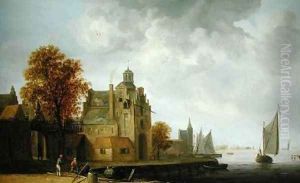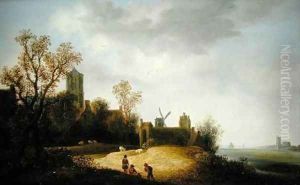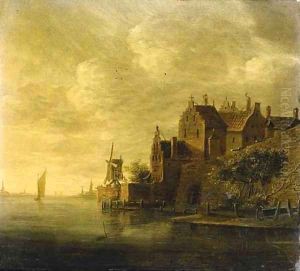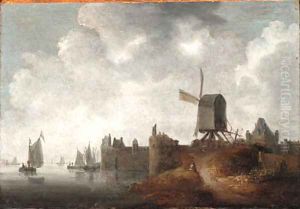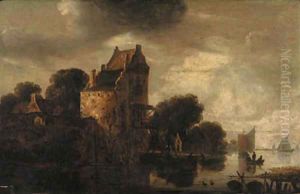Wouter Knyff Paintings
Wouter Knyff was a Dutch artist known for his work in the 17th century, particularly within the context of the Dutch Golden Age, a period characterized by unprecedented economic prosperity and cultural achievements in the Netherlands. Born in 1636, Knyff's artistic journey unfolded in an era where art and culture flourished, with painting, in particular, reaching new heights of creativity and technical skill. Although not as widely recognized as some of his contemporaries like Rembrandt or Vermeer, Knyff made significant contributions, especially in the realm of landscape painting.
Knyff's work is characterized by detailed and atmospheric landscapes that often include pastoral scenes, bustling cityscapes, and serene waterways. These subjects were popular among Dutch Golden Age painters, who found an eager audience among the prosperous middle and upper classes of the Netherlands. These classes were keen to commission and purchase art that reflected both the beauty of the Dutch landscape and the commercial and naval prowess that the country was experiencing at the time.
Throughout his career, Wouter Knyff exhibited a keen eye for detail and a profound ability to capture the interplay of light and shadow, elements that are quintessential to the Dutch landscape genre. His paintings not only depict the physical beauty of the environment but also evoke a sense of calm and tranquility, inviting the viewer to step into a harmonious world removed from the hustle and bustle of daily life.
Despite his talent and contributions to the art world, Knyff did not achieve the same level of fame as some of his peers. The reasons for this are multifaceted, including the sheer number of talented artists working during the Dutch Golden Age, which made the art scene incredibly competitive. Additionally, historical records and documentation of Knyff's life and work are scarce, making it challenging for art historians to fully assess his impact and legacy.
Wouter Knyff passed away in 1693, leaving behind a modest but significant body of work that continues to be studied and appreciated for its beauty and craftsmanship. His paintings are a testament to the vibrancy of the Dutch Golden Age of art, capturing the essence of a period that remains one of the most fertile and fascinating in the history of art.
